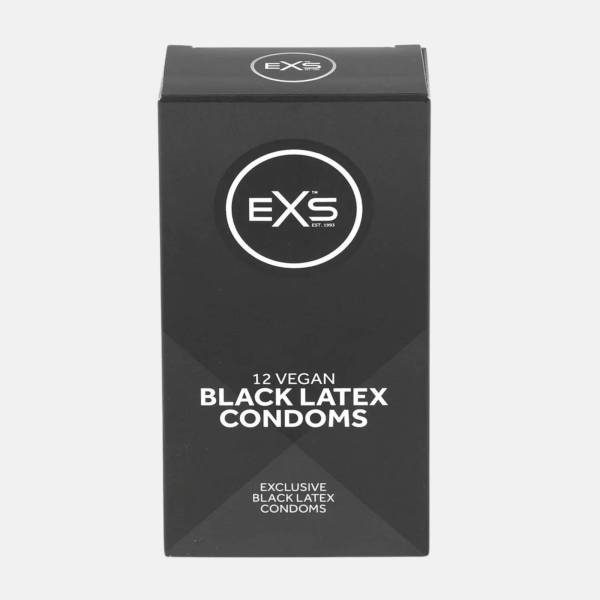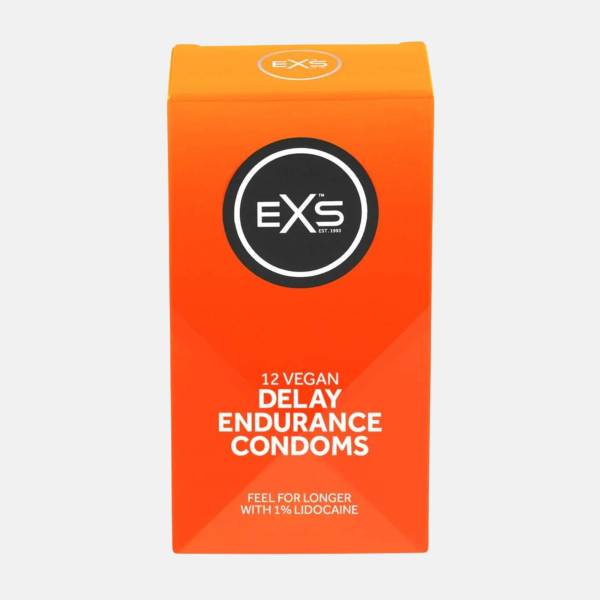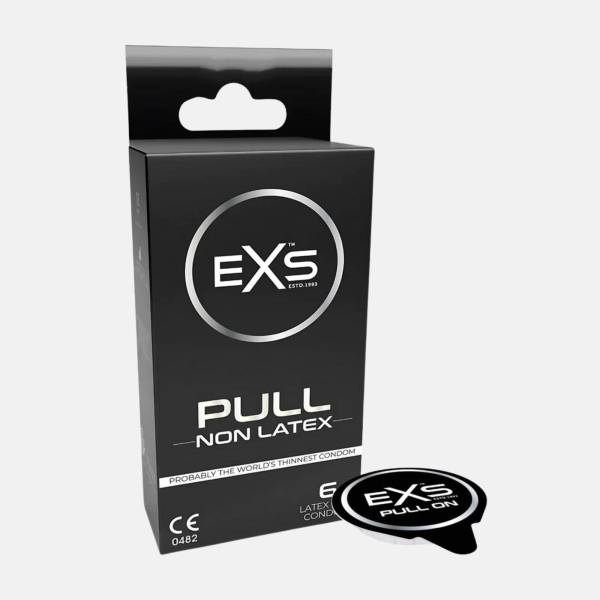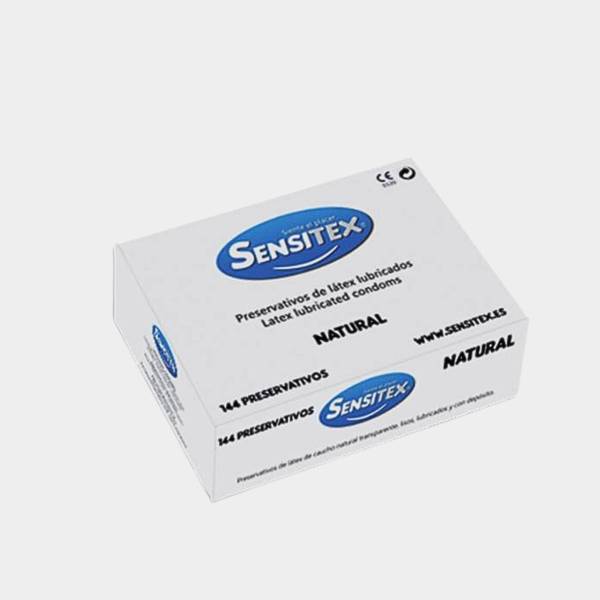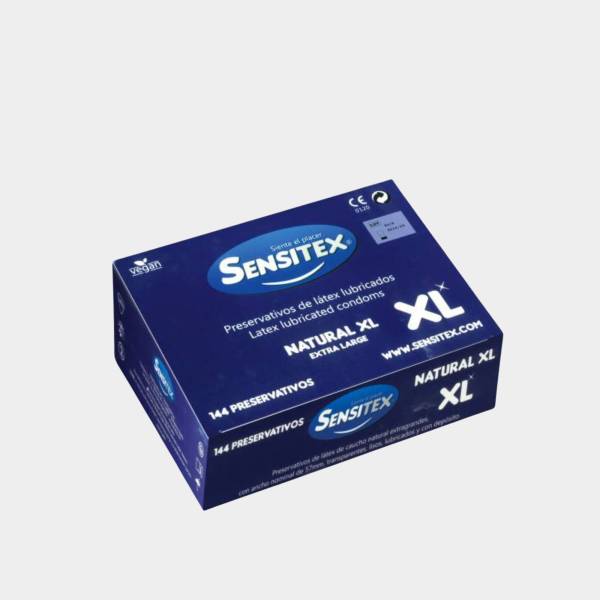Condoms
Discover our range of condoms
Condoms: for pleasure, prevention and protection.
The condom is a flexible latex sheath designed for protection. Like all contraceptives, they are somewhat restrictive, which is why they come in a variety of forms to offer different protection and sensations.
- PRÉSERVATIFS NOIRS X126,95 €
- PRÉSERVATIFS DELAY X1210,95 €
- PRÉSERVATIFS SANS LATEX X610,95 €
What are condoms used for?
Designed to protect against unwanted pregnancy and sexually transmitted diseases and infections, condoms play a number of vital roles in your sexual well-being and that of your partner.
Prevention and protection
The condom is a latex sheath impervious to vaginal, anal and penile secretions, as well as to various bodily fluids such as blood and semen. It is a contraceptive method and currently the best system for protecting against STIs (Sexually Transmitted Infections) transmitted by penile and vaginal secretions, as well as semen. It also protects against hepatitis B and HIV, and helps prevent pregnancy.
On the other hand, even if it is an asset for hygiene, it does not protect against sexually transmitted infections through contact with mucous membranes. This is also the case for genital herpes, since contact is enough to infect. What's more, it offers little protection against syphilis (around 30%) and human papillomavirus (HPV). But it's still a reliable ally, especially if you're a libertine!
How do I use a condom properly?
Not everyone is lucky enough to have had sex education classes, and certain subjects like sodomy are not always discussed. Yet condoms are essential for hygiene, and their correct use is indispensable for a relationship based on trust.
Penis use
A reminder of usage doesn't hurt anyone. When your penis is erect, carefully tear open the packet without using your teeth or fingernails, to avoid damaging the condom. Place the condom on the glans, rolled edge outwards, to unroll it. Pinch the reservoir to empty the air and continue unrolling to the base. If you want to switch from the anal to the vaginal area, change it. Never reuse a used condom: use a large box if your activity is intense. Even if you don't ejaculate at the end of intercourse, remove it from your partner and tie a knot before throwing it away.
You can use lubricant on the penis and on the condom for your own and your partner's comfort. Don't wait until you lose your erection before removing the condom, as it may remain in its orifice. If in doubt, it's best to use one.
What about toys?
The use of sex toys does not prevent the transmission of venereal diseases, and is often recommended for anal sex. Whether you're playing with dildos, a dildo harness or using a dildo belt, unrolling a condom on them also helps to ensure good hygiene of your objects. In the same way as with a bare penis, a condom is a good way to be able to switch from anal to vaginal practice without risking the slightest infection. Simply change it between penetrations to ensure that no bacteria are transmitted from the rectum to the vagina.
And if you're using a cockring, wearing a condom won't get in the way, as you can simply position the sextoy on top or at the base.
Should I use lubricant with a condom?
Condoms are already lubricated on the outside to make penetration easier and allow the latex to glide over the skin and mucous membranes. It's not compulsory to add lubricant, but it may be more pleasant to put a little on the penis before slipping on the contraceptive to ease the process. It's also a good idea to add a generous amount of lubricant to the condom you've already put on for anal sex; anal pleasure doesn't have to be painful, so the use of poppers and lubricant is welcome. Especially as the anus, unlike the vagina, is not capable of lubricating itself
Also, if your partner suffers from vaginal dryness, the lubricant in the condom is not enough. So don't hesitate to add some to the entire length of the penis and glans, for the intimate well-being of the person sharing your bed. You can also look to water-based massage oils, compatible with latex and mucous membranes, for delicious penile massages and well-lubricated penetration.
Condom size
If you've ever seen an inflated condom demonstrated in a sex-education class, then you know that there's a standard size that fits the average penis. However, there are many different sizes out there. And above all, the wrong size can lead to discomfort and even accidents. For both well-being and hygiene, knowing and choosing the right condom size immediately makes sensual moments more pleasurable.
Why choose the right condom?
While it may be tempting to take the next size up in the chemist's to impress, choosing the right size is really important to ensure your well-being and a good fit. As the saying goes: "It's not the size that counts, but how you use it". And nothing could be truer than this, since there are as many different penises as there are individuals, but no condom can be made to measure. That's why it's important to know your measurements, a bit like buying shoes: if the contraceptive is too small, you won't be able to roll it out all the way, compromising its effectiveness. If it's too big, it may slip off during intercourse. The same goes for a condom that's too wide, since it's likely to get stuck in your partner's orifice and you're unlikely to be able to remove it yourself, without medical intervention. And if it's too narrow, you'll simply be uncomfortable. In any case, the wrong size generates discomfort that often has consequences for erection and protection.
What is nominal width?
Sizes are sometimes indicated in nominal width. For those who know the ideal nominal width for their penis, this is useful information when trying out new models, or even a new brand. It is measured from one edge to the other, when the top is not yet unrolled and flattened. In itself, it's the diameter of a condom ring. A classic model has a nominal width of 52 to 54 mm, while XL models measure at least 56 mm. Even larger models can have a nominal width of 60 mm: they are suitable for very large sizes.
How do I know my size?
Nothing could be simpler: simply measure your erect penis. Ideally with a tape measure, but if not, with a paper strip and a pencil. First measure the length from the base to the glans, then the circumference around the strongest point of the penis, not from the glans. Circumference is the most important size to know: it's the determining size of a condom, which is rarely calculated according to length. The French average is between 4 and 5.5 cm in diameter (i.e. the width of the condom), so it's up to you to decide where you fall in the spectrum.
By way of example, a circumference of 6 cm (i.e. the size measured by going around like a ring) coupled with a length of 14 cm is equivalent to a size XS. In tabular form, this would look like this:
A circumference of 6 cm and a length of 14 cm constitute a size S
A circumference of 10 cm and a length of 12 cm is a size S
A circumference of 12 cm and a length of 14 cm is a size M
A circumference of 13 cm and a length of 14 cm constitutes a size XL
A circumference of 15 cm and a length of 20 cm constitute size XXL.
Types of condom
From the standard condom to the innovative model, condoms come in a whole range of choices so that everyone can find the right sheath for their sword. To discover new sensations, vary pleasures, ensure comfort and well-being or simply avoid routine, the choice of condom depends on your needs as well as your tastes.
Condoms with effects
To combat the monotony of condoms, some offer various effects: they can be heated to speed up ejaculation, or offer the opposite alternative with a tighter base to delay it. You can even pair them with stimulants to make the pleasure last even longer!
Some have pins or honeycombs, while others are ribbed to increase the sensations tenfold. There are also color variations like black condoms, ideal for BDSM and fetish parties. Still others are fluorescent, to make any erotic moment even more fun. Finally, there are scented condoms or condoms with a specific taste for oral sex, or for those indisposed by the smell of latex.
Different thicknesses
The thickness of a condom is primarily a question of safety, but also of well-being. Some feel reassured by the idea that their contraceptive is thick, while others can't stand having something around their sex. In fact, many men lose their erection as soon as they have to roll out a piece of plastic. That's why extremely thin models have appeared, for a bare-skin feel and tenfold sensations. For example, some of the condoms we offer have a thickness of 0.045 mm, or 45 micrometers: they're among the thinnest, even if the record is 15 micrometers. A conventional condom has a thickness of at least 0.060 mm, or 60 to 80 micrometers.
Note, however, that thickness does not compromise resistance: the thinnest condoms are just as robust as standard ones. But since there's no such thing as zero risk, it's advisable to choose a thicker protection for sodomy or any hard practice, especially for hygiene purposes.
Latex allergies
Around 10% of the population is allergic to latex, and the effect is felt by both the wearer and the person being penetrated. Itching, redness and burning are the first signs of a latex allergy. If this happens, remove the protection and wash the parts that have been in contact with it with soap and water. Fortunately, there's an alternative: polyisoprene condoms.
The history of the condom
Although depictions of penis sheaths can be found in ancient Egyptian frescoes, this means of contraception seems to date back to Roman times. Waterproof animal bladders were used for protection. In Asia, the Chinese used silk paper coated with oil, while the more creative Japanese produced sheaths designed more for pleasure. However, the origins of the contraceptive as such are rather hazy, and theories abound. When the term condom first appeared in literature, it was to combat sexually transmitted diseases, but it is also likely that it was invented to combat the illegitimate children of English royalty. In any case, the first natural rubber contraceptives appeared in 1855. Synthetic latex as we know it today did not arrive until the 1930s. If use is still rare, it's because it wasn't until the AIDS epidemic that it was finally publicized through prevention campaigns.

